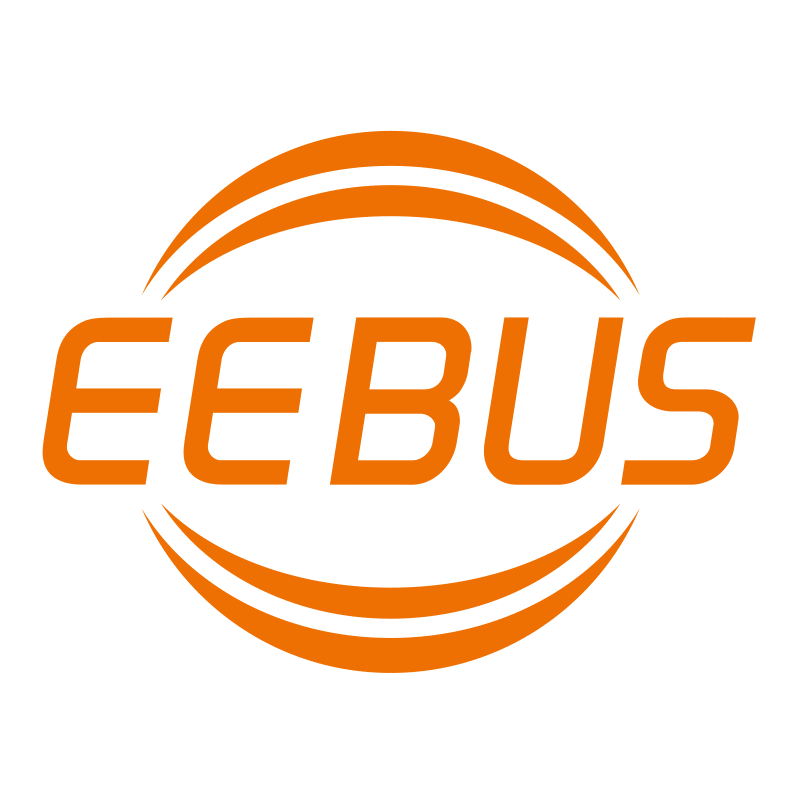Towards a common language for Demand Side Flexibility: Successful showcase of interoperability by ESMIG, EEBUS and Energy@home at the European Utility Week 2017
Cologne, Brussels, Amsterdam, 10.10.2017
During the European Utility Week on October 3-5 in Amsterdam, three major European alliances for standardization in the field of energy efficiency – ESMIG, EEBUS and Energy@home– presented their solution to meet the EU requirements in Demand Side Flexibility.
Demand Side Flexibility, enabled by the global language for smart use of energy
Demand Side Flexibility stands for the management of electrical consumption such as heating, appliances, home batteries, heat storage or electric vehicles by smart grids, depending on the variable availability of energy. This has been identified by the European Commission (DG-CNECT and DG-ENER) as one major standardization task required for the transformation to renewable energy and its variable availability due to changing weather conditions.
ESMIG is active in the field of smart energy for consumers and operability of its solutions, already for many years. Starting with a focus on Smart Metering, ESMIG now deals with political and technical issues related to Home Energy Management.
The EEBUS Initiative and Energy@home have been collaborating on interoperability in the home energy network for the last years, establishing a global language for the smart use of energy. Using the platform neutral message exchange standard SPINE, which is part of the EU driven Smart Appliance Reference Framework SAREF 4 ENER, all sectors of energy management in homes and buildings can communicate seamlessly for the efficient use of energy in the house. Together with members of ESMIG, they are now closing the gap in standardization between smart grids and the energy management in homes and buildings.
Investment in smart appliances pays back within up to 3 years
A recent study[1] on European level about the effects of Demand Side Flexibility authorised by ESMIG, EEBUS and Energy@home, reveals very promising effects. In rather under-estimated model calculations it shows, that the ubiquitous use of smart appliances in an open and flexible energy market would give consumers huge benefits in energy costs.
Following the study’s calculations, the investment in smart appliances would pay back within 1,2 to 3 years (depending on the country) – in addition to the social and economic effects of a more efficient and environmental energy supply.
Members of ESMIG, EEBUS and Energy@home collaborate on Demand Side Flexibility
For the actual demonstration, eleven member companies of the three Alliances have developed a scenario, in which enterprise applications for smart grid operators and energy service companies, communication systems and connected devices at home are working seamlessly together to enable Demand Side Flexibility. Comprising a heat pump, charging station, smart appliances, smart meters and communication technology, this demonstration marks just the beginning of the path towards the global language to connect smart grids and smart homes for Demand Side Flexibility.
The demonstration is being optimized in an ongoing process, one of the next steps is for example the addition of new devices using Thread as communication protocol. This will be presented on future events, such as:
- ETSI IoT Week (24-26 October 2017, Sophia Antipolis).
- European Commission Training and Demonstration Centre (27-28. November 2017, Brussels)
Study „Demand Side Flexibility through Smart Homes“ by Joule Assets Europe and VaasaETT, April 2017,
[fusion_button link=”/download/6502/” text_transform=”” title=”” target=”_self” link_attributes=”” alignment=”” modal=”” hide_on_mobile=”small-visibility,medium-visibility,large-visibility” class=”” id=”” color=”default” button_gradient_top_color=”” button_gradient_bottom_color=”” button_gradient_top_color_hover=”” button_gradient_bottom_color_hover=”” accent_color=”” accent_hover_color=”” type=”” bevel_color=”” border_width=”” size=”” stretch=”default” shape=”” icon=”” icon_position=”left” icon_divider=”no” animation_type=”” animation_direction=”left” animation_speed=”0.3″ animation_offset=””]Download PDF[/fusion_button]
Press Release
[fusion_button link=”/download/6484/” text_transform=”” title=”” target=”_self” link_attributes=”” alignment=”” modal=”” hide_on_mobile=”small-visibility,medium-visibility,large-visibility” class=”” id=”” color=”default” button_gradient_top_color=”” button_gradient_bottom_color=”” button_gradient_top_color_hover=”” button_gradient_bottom_color_hover=”” accent_color=”” accent_hover_color=”” type=”” bevel_color=”” border_width=”” size=”” stretch=”default” shape=”” icon=”” icon_position=”left” icon_divider=”no” animation_type=”” animation_direction=”left” animation_speed=”0.3″ animation_offset=””]Download PDF[/fusion_button]
________________________
About ESMIG
ESMIG is the European voice of the smart energy solution providers. Our members provide products, information technology and services solutions for Electricity, Gas, Water or Heat metering, data transfer or and security, display and/or management of energy consumption and generation at consumer premises. We advocate for a regulatory framework that accelerates the introduction of our members’ innovative products and services, which are fundamental to the smart energy and water systems of Europe’s future.
We actively contribute to the creation of a competitive internal energy market by development of architectures and open standards that allow efficient implementation and integration of new energy management technologies and services. Learn more at www.esmig.eu
Twitter: @ESMIG_EU
About EEBUS Initiative e.V.
The EEBUS Initiative is a non-profit organisation with over 65 members who are the leading stakeholders in all fields of connected home, electrical mobility, energy and smart appliances. Members of the EEBUS Initiative collaborate in various Working Groups to establish a standardized and common language for the interoperability of connected devices. Smart Heatings, electrical vehicles, photovoltaic systems, smart home systems, energy managers and other appliances can thus communicate seamlessly about energy managagement and usability. To learn more, visit www.eebus.org
Twitter: @EEBUS_ORG
About Energy@home
Energy@home is a non-profit association that, for the benefit of the environment, aims at developing & promoting technologies and services for energy efficiency in the home based upon device to device communication and on the interoperability and collaboration of the appliances within the household. Energy@home envisages a holistic approach where the house is an ecosystem of connected and interacting appliances and sub-systems that coordinate themselves in order to optimize energy consumption, increase energy efficiency, and create new benefits for end customers. To learn more, visit www.energy-home.it
For further information and photos:
EEBus Initiative e.V.
Steffen Brückner
Tel.: +49 (0) 221 47 44 12–20
E-Mail: brueckner@eebus.org
ESMIG
Georgiana Huiban
Tel: +32 2 206 68 78
E-mail: communications@esmig.eu
